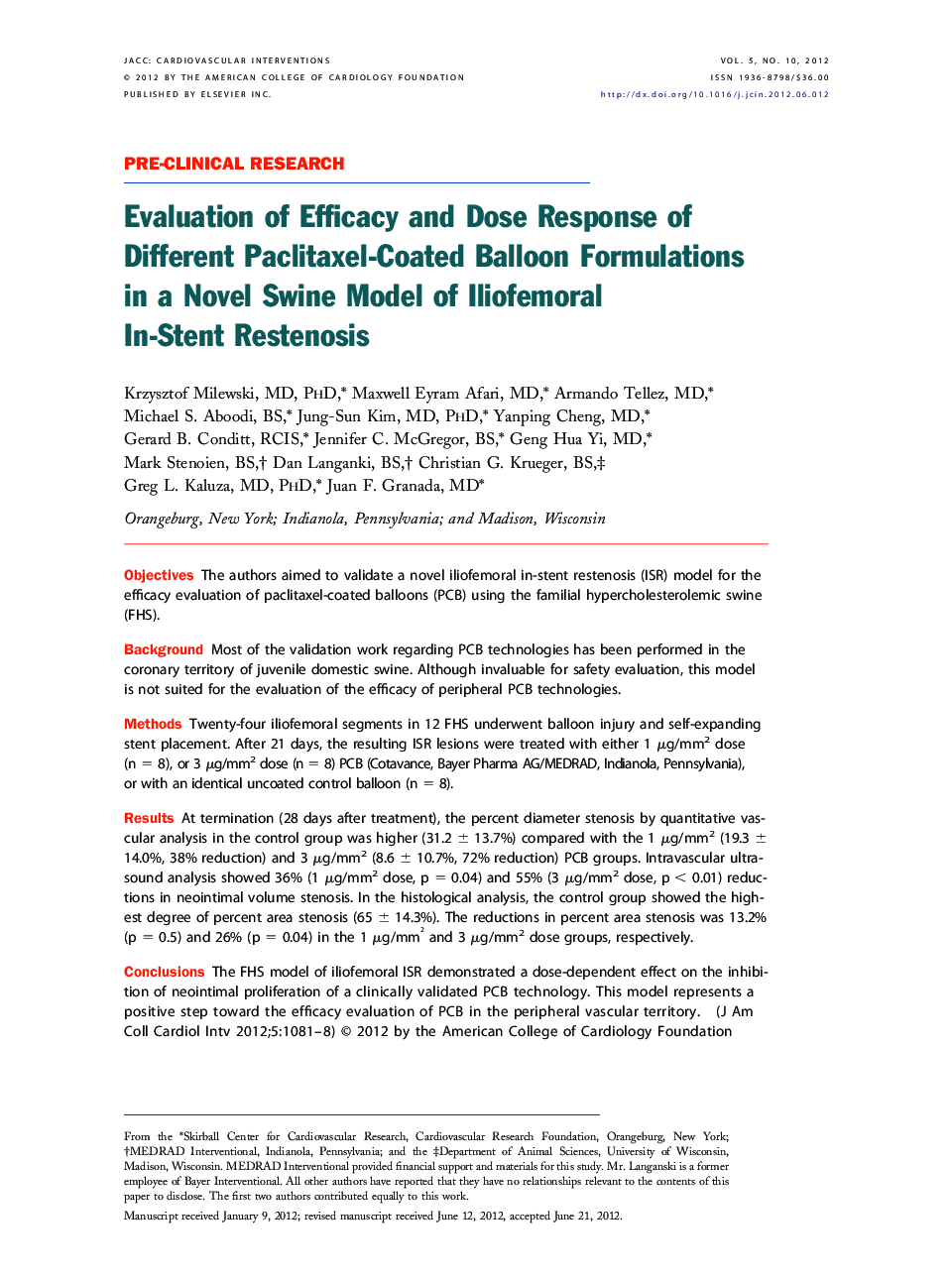| Article ID | Journal | Published Year | Pages | File Type |
|---|---|---|---|---|
| 2940730 | JACC: Cardiovascular Interventions | 2012 | 8 Pages |
ObjectivesThe authors aimed to validate a novel iliofemoral in-stent restenosis (ISR) model for the efficacy evaluation of paclitaxel-coated balloons (PCB) using the familial hypercholesterolemic swine (FHS).BackgroundMost of the validation work regarding PCB technologies has been performed in the coronary territory of juvenile domestic swine. Although invaluable for safety evaluation, this model is not suited for the evaluation of the efficacy of peripheral PCB technologies.MethodsTwenty-four iliofemoral segments in 12 FHS underwent balloon injury and self-expanding stent placement. After 21 days, the resulting ISR lesions were treated with either 1 μg/mm2 dose (n = 8), or 3 μg/mm2 dose (n = 8) PCB (Cotavance, Bayer Pharma AG/MEDRAD, Indianola, Pennsylvania), or with an identical uncoated control balloon (n = 8).ResultsAt termination (28 days after treatment), the percent diameter stenosis by quantitative vascular analysis in the control group was higher (31.2 ± 13.7%) compared with the 1 μg/mm2 (19.3 ± 14.0%, 38% reduction) and 3 μg/mm2 (8.6 ± 10.7%, 72% reduction) PCB groups. Intravascular ultrasound analysis showed 36% (1 μg/mm2 dose, p = 0.04) and 55% (3 μg/mm2 dose, p < 0.01) reductions in neointimal volume stenosis. In the histological analysis, the control group showed the highest degree of percent area stenosis (65 ± 14.3%). The reductions in percent area stenosis was 13.2% (p = 0.5) and 26% (p = 0.04) in the 1 μg/mm2 and 3 μg/mm2 dose groups, respectively.ConclusionsThe FHS model of iliofemoral ISR demonstrated a dose-dependent effect on the inhibition of neointimal proliferation of a clinically validated PCB technology. This model represents a positive step toward the efficacy evaluation of PCB in the peripheral vascular territory.
